
Maurice de Vlaminck was a French painter. Along with André Derain and Henri Matisse, he is considered one of the principal figures in the Fauve movement, a group of modern artists who from 1904 to 1908 were united in their use of intense colour. Vlaminck was one of the Fauves at the controversial Salon d'Automne exhibition of 1905.
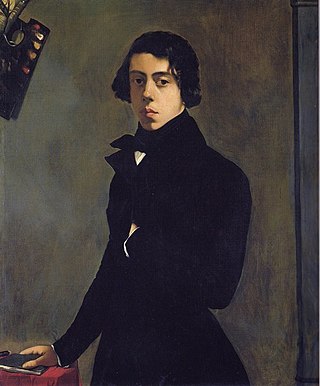
Théodore Chassériau was a Dominican-born French Romantic painter noted for his portraits, historical and religious paintings, allegorical murals, and Orientalist images inspired by his travels to Algeria. Early in his career he painted in a Neoclassical style close to that of his teacher Jean-Auguste-Dominique Ingres, but in his later works he was strongly influenced by the Romantic style of Eugène Delacroix. He was a prolific draftsman, and made a suite of prints to illustrate Shakespeare's Othello. The portrait he painted at the age of 15 of Prosper Marilhat, makes Théodore Chassériau the youngest painter exhibited at the Louvre museum.
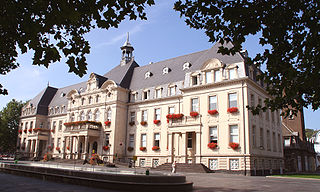
Dudelange is a commune with town status in southern Luxembourg. It is the fourth-most populous commune, with 19,734 inhabitants. Dudelange is situated close to the border with France.

The culture of Luxembourg refers to the cultural life and traditions of Luxembourg. Most citizens are trilingual, speaking French and German in addition to the Germanic national language of Luxembourgish. Although its contributions to the arts are not largely known outside its borders, Luxembourg has a rich cultural history, especially in music, painting and photography. Its evolving museums, concert halls, theatres and galleries testify to its citizens' growing appreciation of culture.

Félix Édouard Vallotton was a Swiss and French painter and printmaker associated with the group of artists known as Les Nabis. He was an important figure in the development of the modern woodcut. He painted portraits, landscapes, nudes, still lifes, and other subjects in an unemotional, realistic style.

Enguerrand Quarton was a French painter and manuscript illuminator whose few surviving works are among the first masterpieces of a distinctively French style, very different from either Italian or Early Netherlandish painting. Six paintings by him are documented, of which only two survive, and in addition the Louvre now follows most art historians in attributing to him the famous Avignon Pietà. His two documented works are the remarkable Coronation of the Virgin and The Virgin of Mercy. Two smaller altarpieces are also attributed to him.

Albert Pierre René Maignan was a French history painter and illustrator.
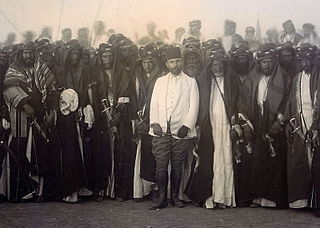
The Hindiya Barrage is a barrage on the Euphrates south of the town of Musayyib in Babil Governorate of Iraq. Located north of the Al-Hindiya District, it was designed by British civil engineer William Willcocks in response to the silting up of the Hillah branch of the Euphrates. Construction of the dam, with a length of over 250 metres (820 ft), lasted between 1911 and 1913. Between 1984 and 1989, a new dam was built several kilometres upstream as a replacement for the Hindiya Barrage.

Joseph Jean Ferdinand Kutter (1894–1941) is considered one of Luxembourg's most important painters. He was greatly influenced by the Impressionists but developed his own distinctive Expressionist style.
Emile Kirscht (1913–1994) was a Luxembourg painter who worked with acrylics and gouache on paper. In 1954, he was a co-founder of the Iconomaques group of abstract artists in Luxembourg.

Nicolas Liez (1809–1892) was a Luxembourg painter, sculptor and architect who is remembered in particular for his lithographs of scenes throughout the Grand Duchy and for his oil painting of the City of Luxembourg.
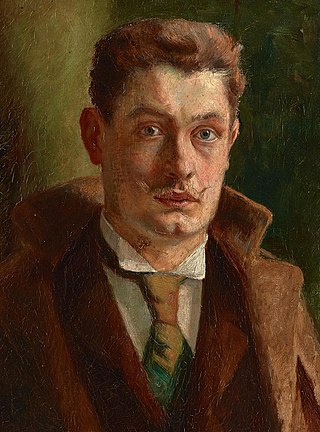
Dominique Lang (1874–1919) is considered to be Luxembourg's most important Impressionist painter. He painted both portraits and landscapes although he was employed as a high-school teacher.
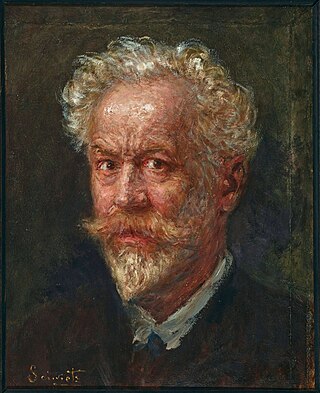
Frantz Seimetz was a prolific Luxembourg artist who painted portraits and landscapes in the Impressionist style.

Luxembourg art can be traced back to Roman times, especially as depicted in statues found across the country and in the huge mosaic from Vichten. Over the centuries, Luxembourg's churches and castles have housed a number of cultural artefacts but these are nearly all ascribed to foreign artists. The first examples of art with a national flavour are paintings and maps of the City of Luxembourg and its fortifications from the end of the 16th until the beginning of the 19th century, although these too were mostly created by foreign artists. Real interest in art among the country's own citizens began in the 19th century with paintings of Luxembourg and the surroundings after the country became a grand duchy in 1815. This was followed by interest in Impressionism and Expressionism in the early 20th century, the richest period in Luxembourg painting, while Abstraction became the focus of art after the Second World War. Today there are a number of successful contemporary artists, some of whom have gained wide international recognition.
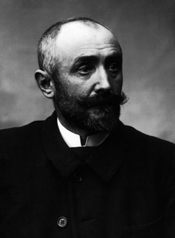
Henry Moret was a French Impressionist painter. He was one of the artists who associated with Paul Gauguin at Pont-Aven in Brittany. He is best known for his involvement in the Pont-Aven artist colony and his richly colored landscapes of coastal Brittany.

Paris today has more than 421 municipal parks and gardens, covering more than three thousand hectares and containing more than 250,000 trees. Two of Paris's oldest and most famous gardens are the Tuileries Garden, created in 1564 for the Tuileries Palace, and redone by André Le Nôtre in 1664; and the Luxembourg Garden, belonging to a château built for Marie de' Medici in 1612, which today houses the French Senate. The Jardin des Plantes was the first botanical garden in Paris, created in 1626 by Louis XIII's doctor Guy de La Brosse for the cultivation of medicinal plants. Between 1853 and 1870, the Emperor Napoleon III and the city's first director of parks and gardens, Jean-Charles Adolphe Alphand, created the Bois de Boulogne, the Bois de Vincennes, Parc Montsouris and the Parc des Buttes Chaumont, located at the four points of the compass around the city, as well as many smaller parks, squares and gardens in the neighborhoods of the city. One hundred sixty-six new parks have been created since 1977, most notably the Parc de la Villette (1987–1991) and Parc André Citroën (1992).

Sivens Dam was a dam which was planned for construction across the Tescou, a tributary of the Tarn in the basin of the Garonne in Southern France, near to Toulouse. The construction site was 10 km north of Lisle-sur-Tarn, in the Department of Tarn (Midi-Pyrénées). The dam was named after the nearby Forest of Sivens. Construction work began in 2014 and was then halted after Rémi Fraisse, a 21-year-old man protesting against the construction project, was killed by a stun grenade fired by police. His death sparked further protests across France, some of which were violent. The project was then closed in 2015 by the Minister of Ecology Ségolène Royal. There was a later proposal for a smaller dam.

The Tescou is a tributary of the Tarn in the basin of the Garonne in southern France. It flows 48.8 kilometres (30.3 mi) through the departments of Tarn, Tarn-et-Garonne and Haute-Garonne.
Alice Dannenberg, was an early 20th century French painter of Russian origin who cofounded an art school in Paris, the Académie de la Grande Chaumière.

The Ospedale Reservoir is a reservoir in the Corse-du-Sud department of France on the island of Corsica. It holds drinking water for the southeast of the island, including Porto-Vecchio. It is surrounded by a forest that has been designated a Zone naturelle d'intérêt écologique, faunistique et floristique (ZNIEFF).


















